Description
Track 3 on “5G and Beyond” will focus on the key paradigms set for future radio and IoT communication, namely openness and intelligence, particularly at a network edge. It is particularly interesting that mentioned openness and intelligence of 5G and future 6G networks create both opportunities and challenges at the same time that will be covered in the industry panel sessions. The track will feature sessions on an Open Radio Access Network (O-RAN), 5G-IoT platform with Fog/Edge intelligence for smart city applications, edge computing and AI for 5G and beyond, evolution from 5G IoT deployment to 6G vision, and intelligent Full-Duplex technology and services.
Track Chairs
Prof. Hanna Bogucka, Poznan University of Technology, RIMEDO Labs, Poland
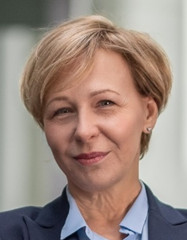
Hanna Bogucka received the Ph.D. degree with honors and the Doctor Habilitus degree in Telecommunications from Poznan University of Technology (PUT), Poznan, Poland in 1995 and 2006 respectively. Currently, she is a full professor and the Director of the Institute of Radiocommunications at PUT. Moreover, prof. Bogucka is the co-founder, Board Member and the Head of Cooperation of RIMEDO Labs, a successful startup and the spin-off from PUT. Prof. Bogucka is involved in research in the area of wireless communications: radio resource management, cognitive radio, and green communication. She has been involved in multiple European 5th – 7th Framework Programme and Horizon 2020 projects, European COST actions, National Science Centre projects, and industry cooperation. Prof. Bogucka is the author of 200 research papers, 3 handbooks in the area of radio communications and digital signal processing (in Polish), and 3 scientific monographs on flexible and cognitive radio. Prof. Bogucka has been appointed IEEE Communications Society Director of the EAME Region (Europe, Africa, Middle East) and elected IEEE Radio Communications Committee Chair for the term of 2015-2016. Currently, she is the IEEE ComSoc Fog/Edge Industry Community Regional Chair in Europe, elected Member at Large of the IEEE ComSoc Board of Governors representing EMEA region (2023-2025), and a member of the Polish Academy of Sciences.
Ken Hatano, Senior Manager, Toshiba Digital Solutions Corporation, Japan
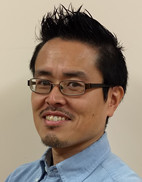
Ken Hatano is Senior Manager in Toshiba Digital Solutions Corporation. He started his career on embedded system firmware development, including Web DVD player, ADSL WiFi Router. He studied information networking in the US. After developing BIOS on Toshiba’s laptop PC in Japan, he lived in Seattle to work with Microsoft for more than 3 years. Back to Japan again, he started working on cloud and AI solution, and focused on strategic alliances by exploring partnerships to better leverage Toshiba’s AI/IoT solutions, worked as use case lead of the OpenFog Consortium. Now, he is working on DX engineer development. He has extensive ICT (information and communications technology), software development, cloud and AI experience. He has a Bachelor of Science degree in computer science, a master’s degree in computational intelligence and systems science from Tokyo Institute of Technology, along with a master’s degree in information networking from Carnegie Mellon University.
—————————————————————–
Indf-03-1: From 5G IoT Deployment to 6G Vision
Abstract
Cellular wireless communications become more and more essential to enable IoT services. In 5G IoT wireless services, mMTC (Massive Machine Type Communication) and URLLC (Ultra-Reliable and Low Latency Communication) are included. In 5G era, researchers and companies have started applying cellular wireless technologies to enable IoT applications. Nevertheless, current 5G technologies cannot solve all the IoT problems. Beyond 5G technologies are needed to better serve different IoT vertical applications in smart manufacturing, smart health care, smart transportation, etc. Experiences of current 5G IoT deployment in various vertical markets provide a reality check on how telecommunications networks service IoT applications and what are the missing pieces to enable better IoT services.
6G wireless communications and networking systems are expected to support diverse IoT services. As 6G system design will be application-driven, it is critical to investigate how different IoT applications will drive the future research and development of 6G system. In this industry forum, we will invite experts from industry and academia to share their experiences on 5G IoT service deployment and views on research directions toward 6G visions for future IoT services. In this special session, the following topics will be covered:
- 5G IoT deployment for vertical industry and lessons learned
- IoT services and technologies with Non-Terrestrial Networks
- Gap analysis from 5G IoT to 6G IoT Technologies
- Vision toward 6G IoT
Chair
Dr. Hung-Yu Wei, National Taiwan University, Taiwan
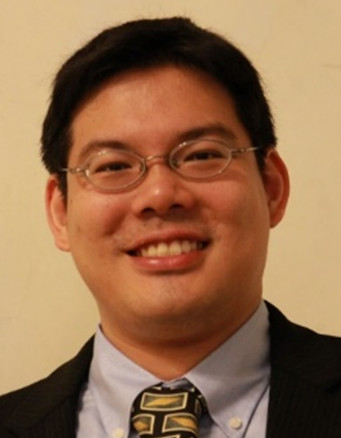
Hung-Yu Wei is a Professor in Department of Electrical Engineering and Graduate Institute of Communications Engineering, National Taiwan University. Currently, he serves as Associate Chair in Department of Electrical Engineering. He received the B.S. degree in electrical engineering from National Taiwan University in 1999. He received the M.S. and the Ph.D. degree in electrical engineering from Columbia University in 2001 and 2005 respectively. He was a summer intern at Telcordia Applied Research in 2000 and 2001. He was with NEC Labs America from 2003 to 2005. He joined Department of Electrical Engineering at the National Taiwan University in July 2005. His research interests include next-generation wireless broadband networks, IoT, fog/edge computing, cross-layer design for wireless multimedia, and game theoretic models for communications networks.Dr. Wei received NTU Excellent Teaching Award in 2008 and 2018. He also received “Recruiting Outstanding Young Scholar Award” from the Foundation for the Advancement of Outstanding Scholarship in 2006, K. T. Li Young Researcher Award from ACM Taipei/Taiwan Chapter and The Institute of Information and Computing Machinery in 2012, Excellent Young Engineer Award from the Chinese Institute of Electrical Engineering in 2014, Wu Ta You Memorial Award from MOST in 2015, and Outstanding Research Award from MOST in 2020. He has been actively participating in NGMN, IEEE 802.16, 3GPP, IEEE P1934, and IEEE P1935 standardization. He serves as Vice Chair of IEEE P1934 Working Group to standardize fog computing and networking architecture. He serves as Secretary for IEEE ComSoC Fog/Edge Industry Community. He is an Associate Editor for IEEE System journal and IEEE IoT magazine, and was an Associate Editor for IEEE IoT journal. He is an IEEE certified Wireless Communications Professional. He was the Chair of IEEE VTS Taipei Chapter during 2016~2017. He serves as program co-coordinator for MOST 6G program in Taiwan. He is currently the Chair of IEEE P1935 working group for edge/fog management and orchestration standard.
Speakers
Rath Vannithamby, Intel
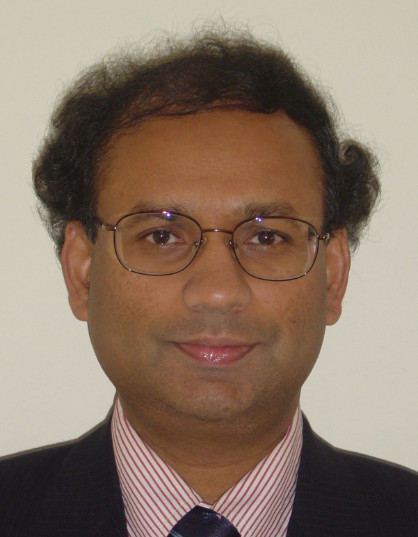
Rath Vannithamby received his BS, MS, and PhD degrees in EE from the University of Toronto, Canada. He is a senior scientist in Intel Labs, Intel Corporation, USA responsible for next gen wireless systems research. He is a three times recipient of Intel Top Inventor award, in 2015, 2017 and 2019. Previously, he was a researcher at Ericsson, USA. He is an IEEE Fellow. He was an IEEE Communication Society Distinguished Lecturer during 2014-2017. He has published over 70 journal/conference papers and has over 300 patents granted/pending. He is an editor of three books on 5G. Dr. Vannithamby is currently the Editor-in-Chief for IEEE Internet of Things Magazine. His research interests are in the area of 6G, IoT, AI for Wireless, Joint computer-communication resource allocation and Edge networking.
Ki-Dong Lee, LG Electronics North America
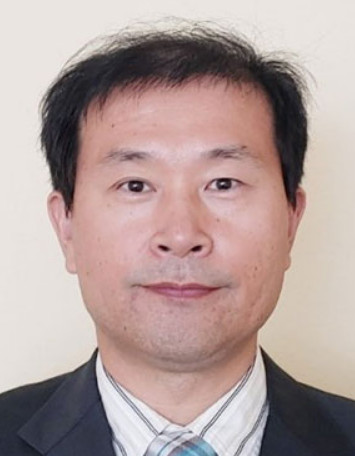
Ki-Dong Lee received his B.S., M.S., and Ph.D. degrees from Korea Advanced Institute of Science and Technology (KAIST). Representing LG Electronics USA R&D, he served as the first 3GPP V2X Rapporteur, as Work Stream Chair of NGMN Alliance V2X TF, and as 3GPP SA1 Vice Chairman. He has received several awards from IEEE ComSoc APB, IFORS/APORS, Korea Math Society, LG Group, and SK Telecom. He is a Cloud Robotics enthusiast with the focus on how to help technology across multiple disciplines better designed to assist humans in various settings. He currently serves as Chair of the Applications Working Group of Next G Alliance, ATIS.
I-Kang Fu, Mediatek
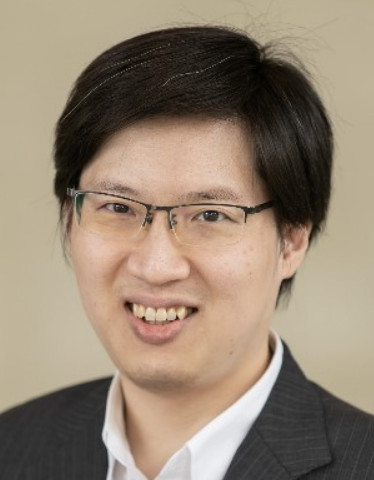
I-Kang Fu received his Ph.D degree from National Chiao-Tung University, Taiwan, in 2007. He is currently a Director of Standard Strategy in MediaTek, contributing to Beyond 5G standardization in 3GPP TSG-RAN, driving new technology initiatives such as cellular/satellite network integration, and exploring pre-6G technology trends. Prior to 5G, he had been actively contributing to B3G and 4G standardization work in IEEE/3GPP since 2005. He is now serving as TAICS TC1 (Advanced Mobile Communication) Chairman position.
Kuang-Hsun Lin: National Taiwan University
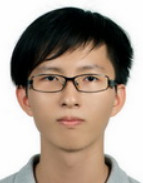
Kuang-Hsun Lin received the B.S. degree in Electrical Engineering from National Taiwan University, Taipei, Taiwan, in 2015. He received the Ph.D. in Communication Engineering from National Taiwan University, GICE, Taipei, in 2022. Since 2015, he has worked with Wireless Mobile Networking Laboratory, which is led by Professor Hung-Yu Wei. He held summer internships at Mediatek in the summer of 2015 and 2018. His research interests include wireless mobile networks, devices/network power-saving mechanisms, mobility management, and other MAC protocol designs. He is working as a graduate research assistant for Taiwan’s NSTC 6G program.
—————————————————————–
Indf-03-3: Openness in Radio Access Network in 6G
Abstract
In recent years, the evolution of the radio access network (RAN) development follows the vivid trends in computer and software design like virtualization and modularization. This driving design paradigm, called Open RAN, is the natural consequence of transforming the base stations from solid-state entities, to distributed, virtualized and cloud-based units with open interfaces. The traditional approach, where the significant part of the protocol stack is hidden within the black-box of one manufacturer, is expected to be replaced by the opened architecture. Within that concept the base stations are split into several functional units, with open interfaces between them including Central Unit (CU), Distributed Unit (DU), and Radio Unit (RU).
The Open RAN, known as “O-RAN” is defined by O-RAN Alliance, an entity, which mission is “to re-shape the RAN industry towards more intelligent, open, virtualized and fully interoperable mobile networks”. The overall idea is that the functional entities can be developed by different vendors due to the open interfaces between them (including Open Fronthaul). In addition, the control of the RAN is given to the external entity, called RAN Intelligent Controller (RIC), which allows to perform optimization of the radio resources, procedures and the radio network using 3rd party applications (called xApps or rApps). Due to the above, the mobile telecommunications market is subject to ongoing change towards segmentation of the ecosystem, including CU, DU, RU vendors, Non-RT and Near-RT RIC vendors, xApp/rApp providers, platform vendors, or system integrators.
The RAN Intelligent Controller is split onto two entities and manages near-real-time (near-RT) and non-real-time (non-RT) control loops respectively. In consequence, the philosophy of network design will be changed significantly – future base stations will rely on Artificial Intelligence/Machine Learning (AI/ML) processing engine, on top of which the numerous functional applications will be installed and may be delivered as third-party applications. Such breaking change will have a dominant impact on the design of significant algorithms (such as radio resource management, interference management, traffic steering, SON-like functions, etc.), typically applied in wireless communication networks, as the requirements on software reliability, isolation as well as cross-layer dependence have to be sufficiently managed. On top of this, those algorithms (in the form of xApps/rApps) can be tailored to specific use cases, including e.g., specialized Internet-of-Things (IoT), Vehicular-to-Anything (V2X) or Uncrewed-Aerial-Vehicle (UAV) applications, which makes the whole concept very flexible. In this concept, Artificial Intelligence is natively supported to allow radio network automation, which is especially important in the heterogeneous networks composed of multiple layers and radio access technologies, especially deployed for various segments of IoT applications.
This session will cover both, research directions and technology commercialization in the area of Open Radio Access Networks for the 6G era. The invited speakers will share current views on the future evolution of the currently standardized Open RAN networks and potential roadblocks for wide-scale adoption of this concept, while on the other end, the discussion shall focus on the potential of the native incorporation of open-RAN-like design within 6G cellular systems.
During the session, 5 invited speakers from both industry and academic communities will share their views, which will include the following topics:
- Current state of trials and commercial deployments of Open-RAN networks
- Applicability of the Open RAN networks for vertical industries or Private Networks
- Open-RAN-related research topics
- Open-RAN integration aspects
We believe that the Open RAN concept is one of the significant development directions leading, in the end, for the new definition of wireless access networks, which prospectively will have a direct impact on the 6G system definition. As high entity modularization and openness of interfaces change the whole wireless network ecosystem, our motivation in this session is to provide the audience with recent achievements in this domain.
Chair
Dr. Marcin Dryjański, Co-founder, Chairman and CEO for Rimedo Labs (PL)

Marcin Dryjański received his Ph.D. from the Poznan University of Technology in September 2019. Over the past 15 years, Marcin served as an R&D engineer and consultant, technical trainer, technical leader, consultant, advisor, and board member. Marcin has been involved in 5G design since 2012 when he was a work-package leader in the FP7 5GNOW project. Since 2018, he is a Senior IEEE Member. He is a co-author of many articles on 5G and LTE-Advanced Pro and a co-author of the book „From LTE to LTE-Advanced Pro and 5G” (M. Rahnema, M. Dryjanski, Artech House 2017). From October 2014 to October 2017, he was an external consultant at Huawei Technologies Sweden AB, working on algorithms and architecture of the RAN network for LTE-Advanced Pro and 5G systems. Currently, he serves as CEO and Principal Consultant at Rimedo Labs, a spinoff of the Poznan University of Technology delivering advanced software solutions and technical consulting in the area of Open RAN.
Speakers
Ruediger Kunze, Head of Standardization & Process Services at Deutsche Telekom

Rüdiger Kunze is head of Standardization & Process services at Deutsche Telekom. He and his team serve the DT group with expert knowledge on process optimization and operational efficiency, designing and building customer solutions with the best possible degree of excellence. Ruediger is responsible for the management and execution of DT’s standardization program and ecosystem development based on open source communities. Ruediger has been deeply involved in projects dealing with the evolution of the Internet architecture and is an active contributor to IETF and other standardization bodies. Ruediger started his career at the innovation and research think tank of Deutsche Telekom. He graduated in Telecommunications Engineering from Brandenburg University of Technology.
Mats Eriksson, CEO at Arctos Labs // Lead Business Developer at Tietoevry

Mats are a telecom veteran with more than 30 years’ experience from the telecoms & cloud sector. His contributions span systems engineering, research, service development, product and business management. Mats are currently working as lead business developer at Tietoevry with special focus on mobile networks, radio access and edge computing as well as being CEO at Arctos Labs. His career also includes: CEO and co-founder of Arctos Labs – a tech startup that develops technologies to optimizes networks of edge clouds. Consultancy assignments to develop 5G architectures and automation solutions for clients. Tieto as Head of Business management for platform R&D services for Radio Access products. Head of Mäkitalo Research Center. A wireless research joint venture between Ericsson, Telia and Luleå University of Technology. As part of that also chairman of the EU Living Lab community (open innovation collaboration)
Prof. Symeon Chatzinotas, Full Professor and Head of the SIGCOM Research Group at SnT, University of Luxembourg
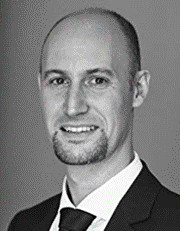
Symeon Chatzinotas [S’06, M’09, SM’13] is Full Professor and Head of the SIGCOM Research Group at SnT, University of Luxembourg. He is coordinating the research activities on communications and networking across a group of 70 researchers, acting as a PI for more than 40 projects and main representative for 3GPP, ETSI, DVB. He is currently serving in the editorial board of the IEEE Transactions on Communications, IEEE Open Journal of Vehicular Technology and the International Journal of Satellite Communications and Networking. In the past, he has been a Visiting Professor at the University of Parma, Italy and was involved in numerous R&D projects for NCSR Demokritos, CERTH Hellas and CCSR, University of Surrey. He was the co-recipient of the 2014 IEEE Distinguished Contributions to Satellite Communications Award and Best Paper Awards at WCNC, 5GWF, EURASIP JWCN, CROWNCOM, ICSSC. He has (co-)authored more than 600 technical papers in refereed international journals, conferences and scientific books.
Simon Pryor, R&I Director at Accelleran
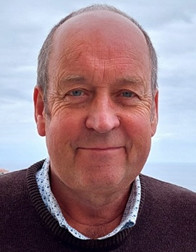
Simon has had an extensive career as engineer in ICT, satellite and mobile communications combining technical competence with product marketing, project management and market development expertise. Within Accelleran, Simon co-ordinates the funded R&I strategy for 5G and beyond Open-RAN (Radio Access Networks), building up a broad portfolio of both longer term research and commercial market oriented innovation projects, to drive the SME scale-up ambitions and strategic positioning of Accelleran, within the Belgian and European industry and research eco-systems.
Dr. Adrian Kliks, Assistant Professor at Poznan University of Technology // CTO and Co-Founder at Rimedo Labs
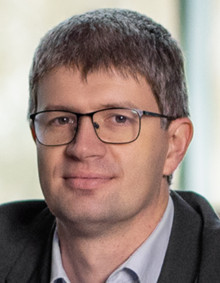
Adrian Kliks received his postdoctoral degree in technical sciences, discipline: technical computer science and telecommunications in February 2019. He works as a university professor at the Institute of Radiocommunications of the Poznan University of Technology. He took part in numerous international research projects: URANUS, NEWCOM ++, ACROPOLIS, COGEU, NEWCOM #, COHERENT, in COST IC0902 and COST-Terra (IC 0905) and in national projects EcoNets, Bionets, OPUS project manager on V2X communication, and did he manage numerous industrial and commissioned projects. A member of the IEEE for many years, IEEE Senior Member since 2013, a member of the IEEE Broadcasting Society, IEEE Communication Society, IEEE Standard Association. Dr hab. Adrian Kliks, participated in the years 2012-2017 in the work of the IEEE P1900.x standardization group, as a member with voting rights, and also served as secretary. Member of the groups: Radio Communications Committee and Research Group on Software Defined and Virtualized Wireless Access. In the years 2014-2016 he was the Membership Development / Web Visibility Chair in the IEEE for the EMEA area. From 2019 – editor-in-chief of the Journal of Telecommunications and Information Technology of the Institute of Communications, editor-in-chief of EAI Endorsed Transactions on Wireless Spectrum. Currently Adrian serves as CTO at Rimedo Labs.
—————————————————————–
Indf-03-5: Intelligent Full-Duplex Technology and Services
Abstract
After a lot of theoretical work and practical R&D in universities, institutes and companies, the co-frequency co-time full duplex (CCFD) techniques have eventually come onto the stage of the standardization in 5G-R18, which marks the maturity of some key technologies at least and pushes the research results to be integrated in products at the commercialization. It is expected that the momentum of the further developments of the new technique and its combination with other advanced technology keeps growing, because of the potential to double the spectrum efficiency by simultaneously transmitting and receiving wireless signals at the same frequency and the same time. Actually, the 5G standard extends its system to accept CCFD as a new dimension for providing the more efficient services to the mobile communication, especially to the small cell and Fog network. In addition, using the CCFD technique to the physical layer security can be also expected when the self-interference is changed to the artificial noise for preventing the communication massage from the Eve’s detections.
So far, the experts over the world are making efforts to build up the paradigm to handle the fast booming data in types of the vertical services, which use the CCFD methods to promote the services of V2V communication and m-healthcare as well.
In prospective of the CCFD research, cancellation of the self interference is still a tough work for the application over a long distance. The designs of the multiple antenna, RF- and digital canceller require the sophisticate techniques upon the considerations of the applications. On the one side, the use of the advance promises the system’s improvement. While, on the other hand, the specified service brings the technical demands the R&D to meet. Hence, it is necessary to get the people, working in different areas, together on the joint discussions for sharing their contributions in the technical development and system design.
Since the potentials of the CCFD are needed to be exploited further in several aspects mentioned above, this panel invites the experts to talk about the latest the original ideas, techniques, applications and system integrations. The detailed discussions on the standards and protocols for the implementations are also welcome.
The participations of CCFD in the advanced systems will be definitely necessary to the 5G services including the IoT services. To this end, 4 to 5 experts will be invited for giving the presentations in this 2 hour-session on the following issues, but not limited.
- The advanced techniques of CCFD
- The applications of CCFD to Fog network, small cell and V2V
- The extension of CCFD to physical layer security
- The combination of CCFD with Machine learning
- CCFD-enabled Intelligent IoT Services
Chair
Dr. Bingli Jiao, Peking University
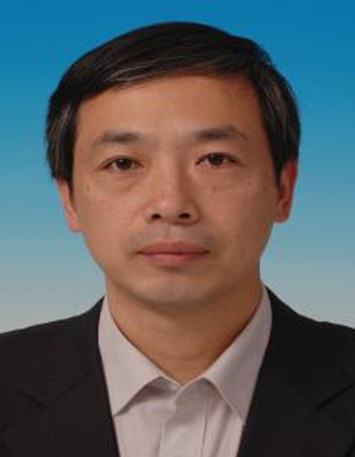
Bingli Jiao (Senior Member, IEEE) is the Director of the Wireless Communication and Signal Processing Research Center, Peking University. He is also the Director of the engineering center of digital hospital of Chinese Education Ministry. In 2006, he filed a patent entitled by “the interference cancellation for co-frequency co time slot duplex” and have carried out the profound R&D in this area till now. He published more than 150 papers, among them more than 50 papers are published in IEEE journals.


